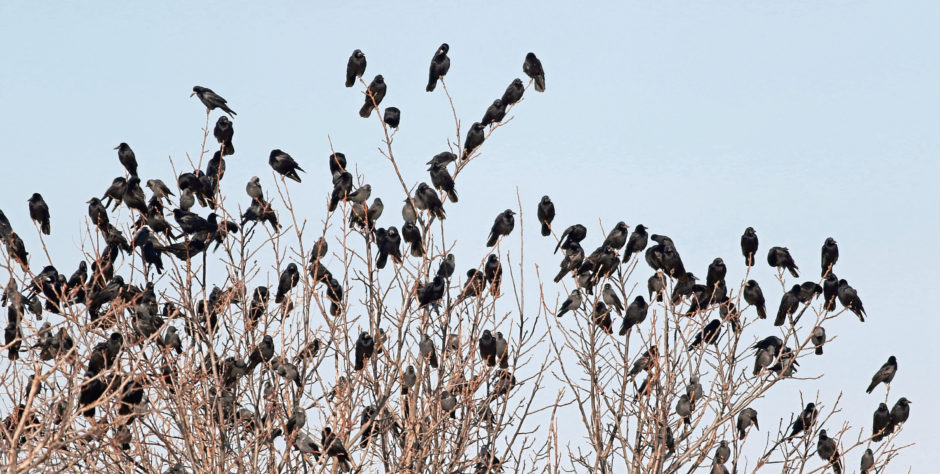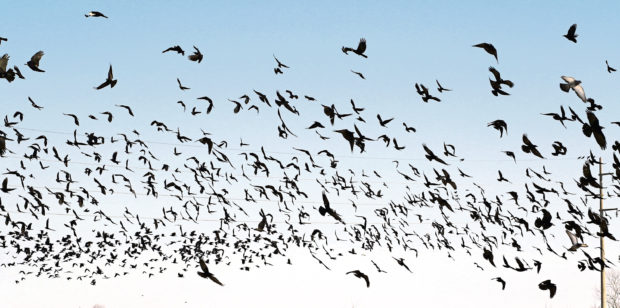It is dawn in the strath and there is a murmuring from in among the pines on the wooded ridge; strange high-pitched calls, sneezes and snorts, gentle at first but slowly gaining in intensity.
It is a mixed roost of jackdaws and rooks, and the birds are stirring, ruffling their feathers, stretching their wings and hailing the dawn of a new day. The calling continues for a few more minutes, but now the sky glimmers with faint light; a delicious pastel mauve and blue in the eastern horizon – daybreak is near. Suddenly, the rooks and jackdaws explode into the air in a cacophony of noise and swirl about excitedly over the trees.
They swoop backwards and forwards in a black cloud above the pines, the cold dawn air echoing to their calls. A group of jackdaws breaks away and heads towards my vantage point by the edge of a shelterbelt, and here they tumble above me, before going on their way once more.
It is a similar story up on the ridge, the birds wheeling and diving before dispersing in small groups to spend the day feeding in fields, calling all the while.
During the day these roving flocks of rooks and jackdaws are a typical feature of our farmland, eating a wide variety of foodstuffs, including harmful pests such as wireworms and leatherjacket grubs.

When evening comes, the whole process occurs in reverse. Small groups of jackdaws and rooks gather in nearby trees, before taking to the wing in an aerial frenzy and then falling rapidly into the main roost, twisting and turning with wings half closed.
For another few minutes the restless socialising continues as they settle down, and suddenly, as if a light switch has been flicked, it falls silent.
For me, these dusk and dawn gatherings of rooks and jackdaws are one of nature’s greatest winter spectacles.
Both are intelligent birds, and whenever I watch these socialisations, I always get the impression they are enjoying themselves; revelling in the company of their own kind and having a bit of fun in the air.
There is a social hierarchy amongst rooks in their autumnal and winter roosting sites, with the dominant birds settling on the higher branches, which makes me wonder whether jackdaws roost even lower down given their smaller size. And do they also have their own pecking order?
Flocking together at this time of year brings several advantages; birds can work together to find food, there is safety in numbers, and once in the roost, warmth can be generated by being together.
The following evening, I returned to the wooded ridge. The gloaming sky faded, but on the behest of some mysterious avian cue, rooks and jackdaws quickly materialised above me and began their wonderful pre-roost aerial ritual. As they settled, I pulled up my jacket collar and headed for home, my mind buzzing in wonderment at what I had just seen.
INFO
Research has shown that the lifelong, monogamous pair bonds that are characteristic of both rooks and jackdaws are reflected in winter flocks, with birds often keeping particularly close to their partners.










